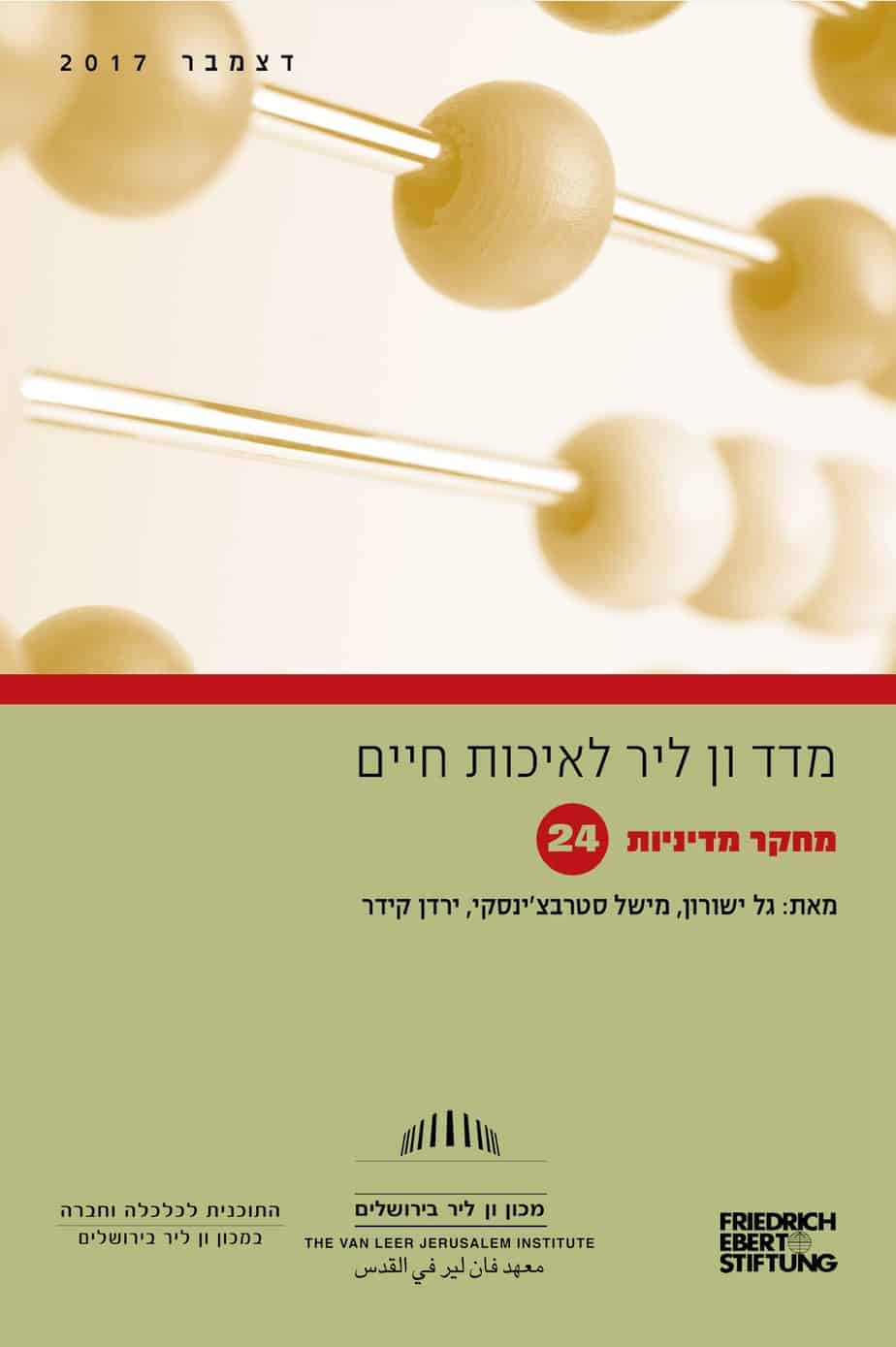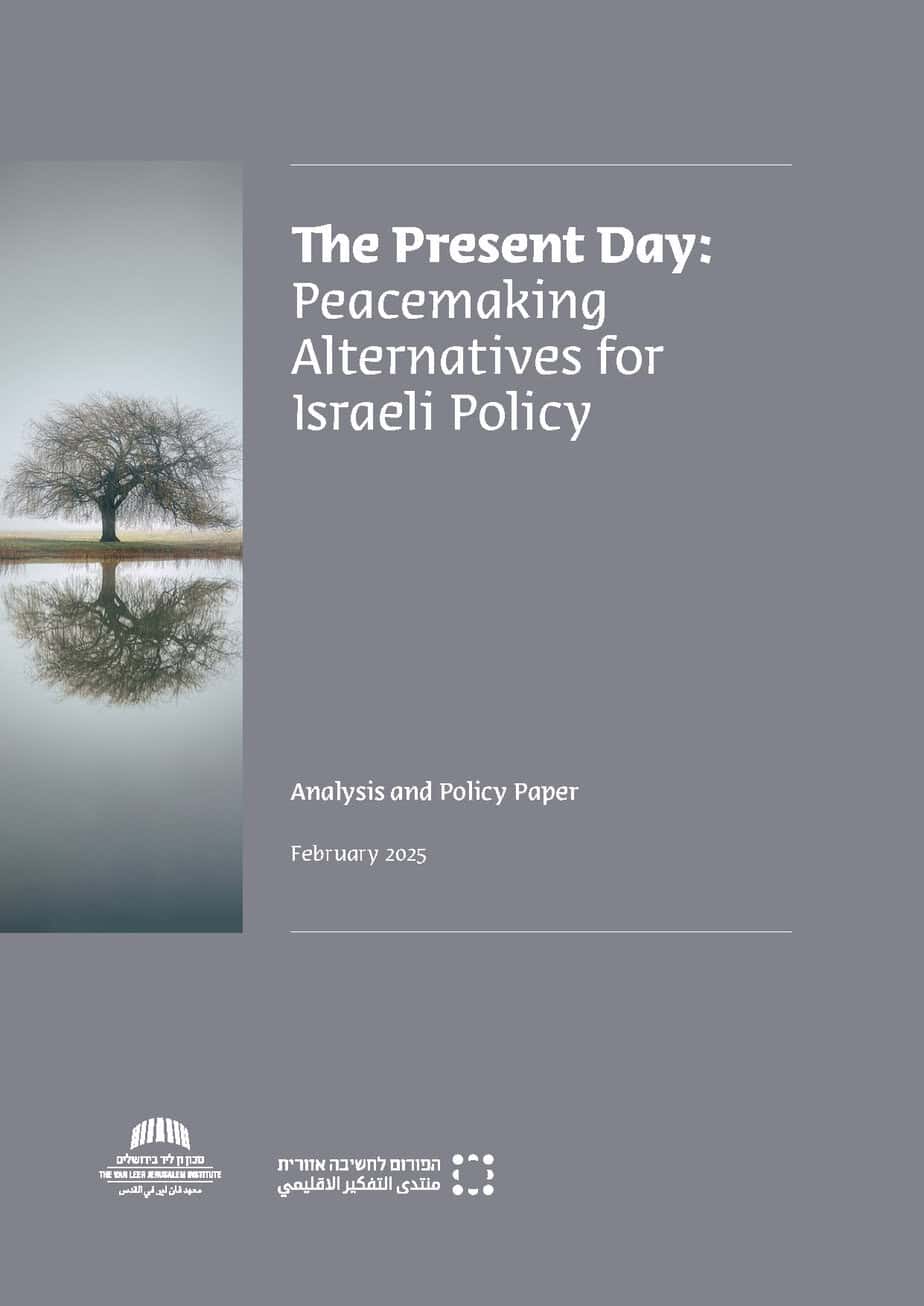The Van Leer Wellbeing Index
| By | Gal Yeshurun, Michel Strawczynski, Yarden Kedar
|
| Publisher | Van Leer Institute Press |
| Language | Hebrew |
| Year of Publication | 2017 |
| Series | The Economics and Society Program |
The Gross National Product (GNP) per capita, a measure instituted in the early twentieth century, was from its inception the main international measure of wellbeing and economic prosperity. However, since the middle of that century and even more so in recent decades, critics have stated that the GNP in an insufficient measure of wellbeing and that alternative measures should be found that would more appropriately reflect the levels of wellbeing in various areas and in diverse societies, and especially the developments in each. These criticisms paralleled scientific developments that made it possible to focus increasingly on questions of long-term sustainability and wellbeing. In the wake of these developments, over the past decade there have been many international initiatives for measuring the quality of life and sustainability, offering a variety of measures that are alternatives to the GNP. All the new measures seek to reflect more precisely the status of living in various countries and its development in each.
This study set out to create such a measure for Israel—the Van Leer Wellbeing Index. This Index makes an adjusted calculation of various indicators pertaining to every aspect of life. Its aim is to reflect the situation in Israel and to present a nuanced picture of the quality of life in various areas, over time and also in broad comparison to other developed countries. The areas of life that the Index deals with were selected on the basis of the Better Life Index (BLI) measure of the OECD: quality of environment, education, health, civilian involvement in democracy and governance, quality of employment, safety, housing and infrastructure, individual and social wellbeing, and material status of living. The purpose of the Index is to help policy makers and the public understand in which areas public resources should be invested in order to improve our wellbeing.
The findings of the Index, which focused on the years 2005–2014, indicate a systematic gap between Israel’s overall score and the OECD average. They also show the great gap between Israel and the leading countries, both on the quality of life measure and on the sustainability measure. In the areas of education and civilian participation in governance there has been an improvement in recent years, and in other areas, such as individual safety, there has been a decline. Health is the only area in which Israel has maintained a consistently high score relative to the developed countries.
A PDF file of the booklet may be downloaded or the print version may be ordered (cost for mailing: NIS 10).




